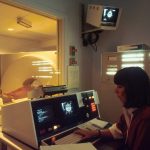Chronic pelvic pain is a complex and debilitating condition that affects individuals of all genders. While traditional treatments have often revolved around surgical interventions, there is a growing focus on non-surgical approaches that offer promising results. In this article, we will explore some of these non-invasive methods to address the issue, with a particular emphasis on regenerative technologies in physical therapy.
Understanding Chronic Pelvic Pain
Chronic pelvic pain refers to persistent discomfort in the pelvic region lasting for six months or longer. It can stem from various factors, including nerve damage, inflammation, or muscle dysfunction. The discomfort can be constant or intermittent, affecting daily activities, relationships, and overall quality of life.
Non-Surgical Management Strategies
Regenerative Technologies in Physical Therapy
Regenerative technologies offer innovative non-surgical approaches to managing chronic pain. These therapies harness the body’s natural healing mechanisms to stimulate tissue repair and promote pain relief at the cellular level. Among the most promising regenerative technologies in physical therapy for this body part are:
- Focused Extracorporeal Shock Wave Therapy (ESWT): ESWT uses shock waves to stimulate blood flow and tissue repair in the region, reducing inflammation and pain.
- Extracorporeal Magnetic Transduction Therapy (EMTT): EMTT utilizes electromagnetic fields to stimulate nerve and muscle regeneration, contributing to the alleviation of chronic pelvic pain.
- Extracorporeal Pulse Activation Technology (EPAT): EPAT delivers acoustic pressure waves to targeted areas, promoting cellular repair and tissue healing.
- High Energy Inductive Therapy (HEIT): HEIT employs electromagnetic fields to reactivate cells and cell membranes, stimulating healing in nerves, muscles, and blood vessels.

Physical Therapy and Exercises
Specialized physical therapy plays a critical role in managing chronic pelvic pain without surgery. Physical therapists can tailor exercise programs to address muscle imbalances, improve muscle strength, and enhance the overall health of the organs. Incorporating exercises like Kegels, stretching, and relaxation techniques can aid in pain reduction and improve functionality.
Cognitive-Behavioral Therapy (CBT)
Chronic pain can often be associated with emotional distress and negative thought patterns. Cognitive-behavioral therapy (CBT) is a non-invasive psychological approach that helps individuals identify and modify these patterns, improving coping mechanisms and emotional well-being. Combining CBT with physical therapy can provide a comprehensive and holistic approach to managing chronic pain in this body part.
Conclusion
Chronic pain is a challenging condition that can significantly impact an individual’s life. However, non-surgical approaches, such as regenerative technologies, specialized exercises, and cognitive-behavioral therapy, offer hope for relief and improved functionality. By embracing these non-invasive methods, individuals dealing with pelvic discomfort can find effective ways to manage their condition, enhance their well-being, and reclaim control over their lives.







